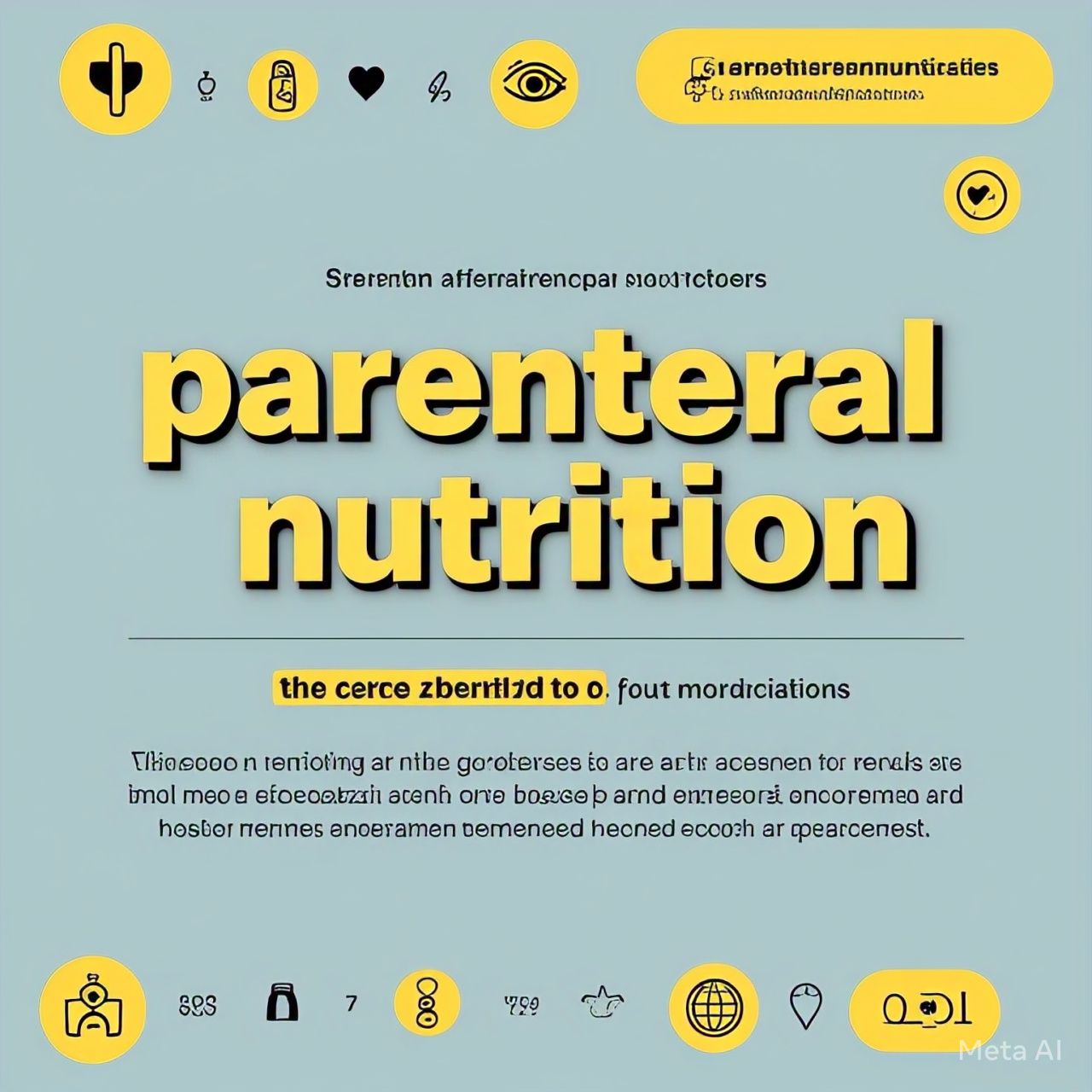Parenteral Nutrition: A Lifeline for Patients Who Cannot Eat

What is Parenteral Nutrition (PN)?
Parenteral Nutrition (PN) is a life-saving nutrition therapy for patients who cannot eat or digest food normally due to medical conditions. Instead of passing through the stomach and intestines, nutrients are delivered directly into the bloodstream through an intravenous (IV) line.
This therapy ensures that critically ill patients, those with severe digestive issues, or individuals recovering from major surgeries receive all essential nutrients to sustain life and promote healing.
Who Needs Parenteral Nutrition?
Parenteral nutrition is used for patients who have:
🔹 Severe Gastrointestinal (GI) Disorders – Short bowel syndrome, Crohn’s disease, ulcerative colitis
🔹 Bowel Obstruction or Paralysis – No gut movement (ileus), post-surgery complications
🔹 Severe Malabsorption – Cannot absorb nutrients even if they eat normally
🔹 Pancreatitis – When oral or tube feeding worsens inflammation
🔹 Critical Illnesses – Patients in ICU with major trauma, burns, or sepsis
🔹 Cancer Patients – If chemotherapy or radiation damages the GI tract
🔹 Neonatal Cases – Premature babies with underdeveloped intestines
Components of Parenteral Nutrition
PN solutions are customized to meet each patient's specific needs and may include:
✅ Carbohydrates – Usually glucose (dextrose) for energy
✅ Proteins (Amino Acids) – To prevent muscle breakdown and support healing
✅ Fats (Lipids) – Essential fatty acids for energy and cell function
✅ Vitamins & Minerals – To support metabolism, immunity, and organ function
✅ Electrolytes & Fluids – To maintain hydration and acid-base balance
💡 Did You Know? Some patients require Total Parenteral Nutrition (TPN) (100% IV nutrition), while others may receive Partial Parenteral Nutrition (PPN) (only supplementing oral intake).
How is Parenteral Nutrition Given?
PN is delivered through a catheter (IV line) placed in a large vein, usually in the chest (central line) or arm (peripheral line).
🔹 Short-Term PN – Given through a peripheral vein (PPN) in the arm
🔹 Long-Term PN – Requires a central venous catheter (CVC) like a PICC line or a port in the chest
💡 Why a Central Line? The solution is highly concentrated, and using a large vein reduces irritation and ensures safe nutrient delivery.
Challenges & Risks of Parenteral Nutrition
While PN saves lives, it also comes with risks that must be managed carefully:
❌ Infections – Catheter-related bloodstream infections (CRBSI) can be life-threatening
❌ Liver Damage – Long-term PN can cause fatty liver disease or liver failure
❌ Blood Sugar Imbalances – PN can cause hyperglycemia (high blood sugar)
❌ Electrolyte Imbalances – Incorrect PN composition can cause low potassium, magnesium, or phosphorus
❌ Nutrient Deficiencies or Overload – Requires careful monitoring
💡 What Nutritionists Must Do:
✅ Ensure correct PN formulation for each patient’s needs
✅ Monitor glucose, liver function, and electrolyte levels regularly
✅ Work with the medical team to prevent infections and complications
Case Study: Managing a Critically Ill Patient on PN
Patient Profile
🔹 Name: Mrs. Funke O.
🔹 Age: 52 years
🔹 Diagnosis: Severe Crohn’s Disease with Intestinal Resection
🔹 Medical History: Multiple bowel surgeries, severe malnutrition
🔹 Current Status: Unable to eat or tolerate enteral nutrition
Clinical Nutrition Plan
📌 Total Parenteral Nutrition (TPN) started via central line
📌 Energy Needs: 1,700 kcal/day (customized based on body weight & condition)
📌 Macronutrient Breakdown:
- Dextrose (Carbohydrates): 60%
- Amino Acids (Protein): 20%
- Lipid Emulsion (Fats): 20%
📌 Vitamins & Minerals Added (Zinc, Selenium, Vitamin D for immunity & wound healing)
📌 Strict Blood Sugar Monitoring – Insulin administered to prevent hyperglycemia
Outcome After 6 Weeks
✅ Weight Maintained – No further malnutrition
✅ Improved Energy & Strength – Patient could start oral diet trials
✅ No Major Infections or Complications
✅ Gradual Weaning from TPN – Shifted to blended enteral feeds
💡 Key Takeaways for Nutritionists:
✔ Always customize PN plans to prevent deficiencies or complications
✔ Work with doctors & pharmacists to adjust PN formulations
✔ Educate patients & caregivers on PN safety at home (for long-term cases)
Final Thoughts
Parenteral Nutrition is a life-saving intervention when the gut is not functional. It requires a multidisciplinary approach involving nutritionists, doctors, pharmacists, and nurses to ensure optimal patient outcomes.
Are you a nutritionist working with PN patients? What challenges have you faced?

